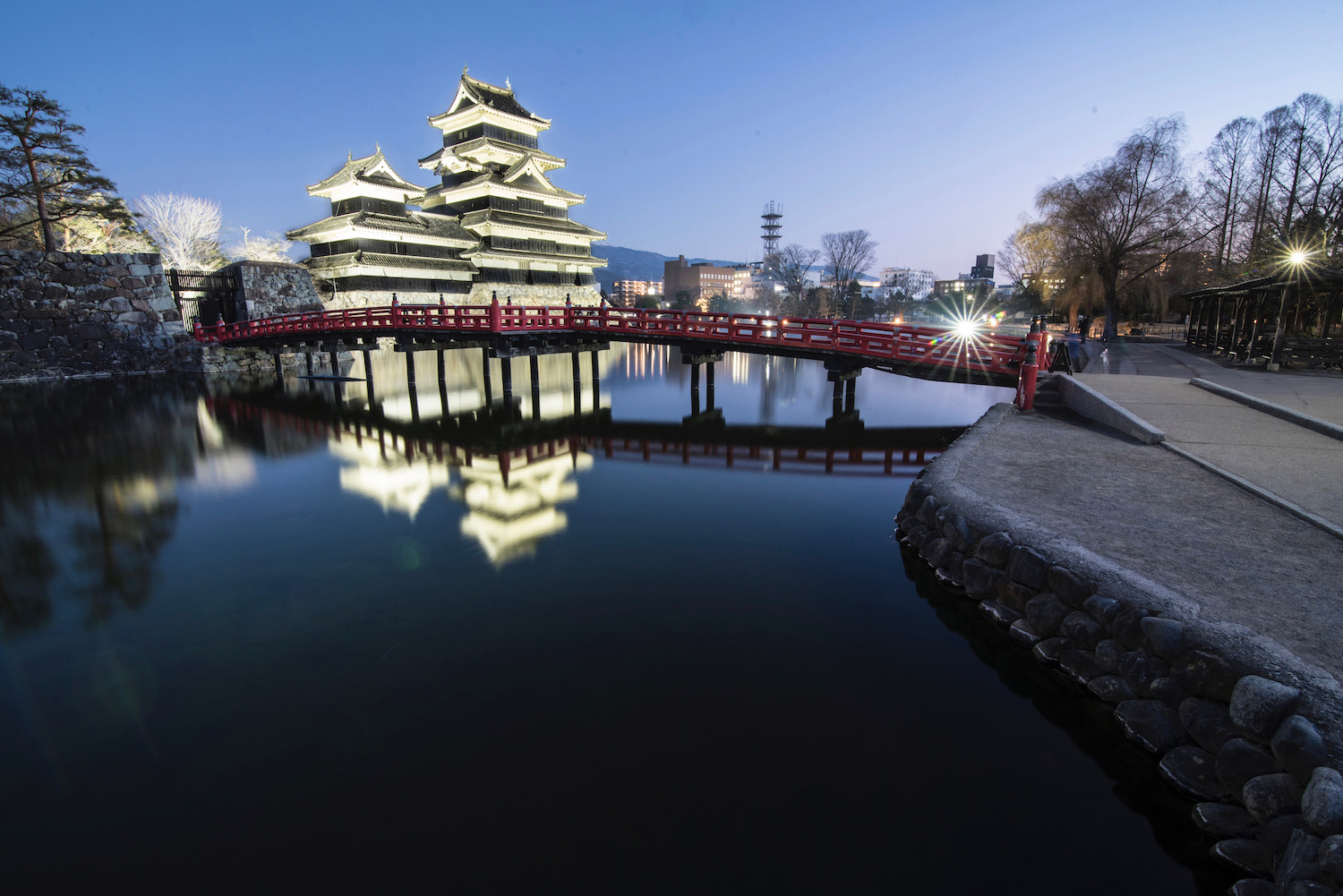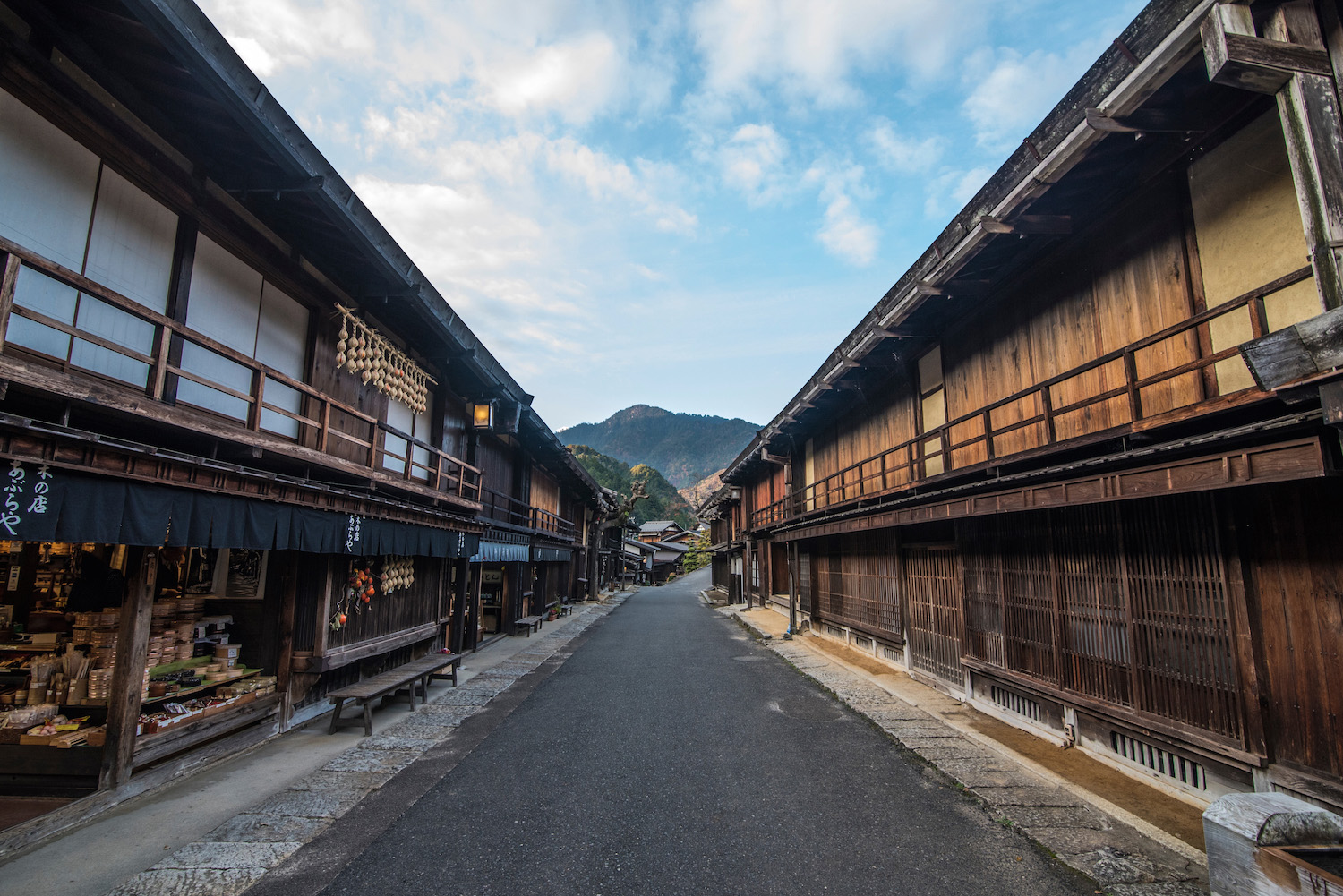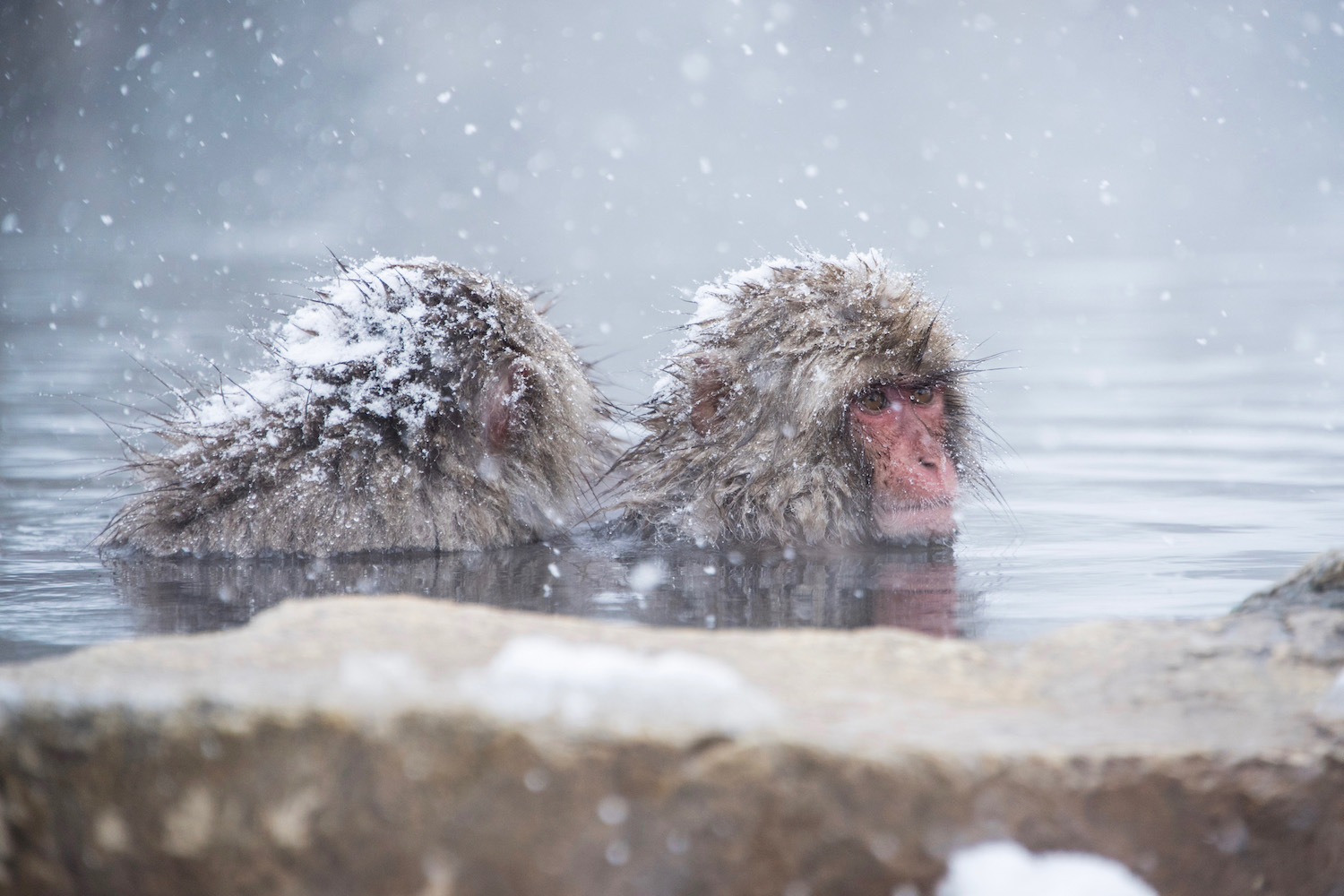It should come as no surprise that I constantly strive to improve my Matsumoto itinerary. After all, I return to this charming city in the Japanese Alps as often as I can, both to take in its memorable (if limited) attractions, and to visit the wide array of destinations within day-trip distance of it.
Indeed, what separates the guide I’m about to share from an ordinary Matsumoto blog you might find elsewhere online is my experience—and my expertise. I’ve followed every single piece of advice I’m giving you; I’ve taken every route I recommend, most of them more than once.
Whether you’ve arrived here looking for day trips from Matsumoto, or simply want to know why you should visit the Japanese Alps in the first place, allow me to warmly welcome you: Matsumoto starts here.

Late in the day – the beautiful lighting at Matsumoto Castle
How to Organize Your Matsumoto Itinerary
Watch the Sun Set Behind Matsumoto Castle
This wouldn’t be a Matsumoto travel blog if I didn’t describe things to do in Matsumoto-proper. Not surprisingly, the most popular attraction in Matsumoto city is Matsumoto Castle. Located about a 15-minute walk northeast of Matsumoto Station, this is one of Japan’s 12 remaining original castles and is notable for its black color, which has earned it the nickname “Crow Castle.” Matsumoto Castle was built in 1594, during the Sengoku period.
Walk the Nakasendo Way for a Day (or Longer)

When it comes to Matsumoto day trips, one of my favorites is to visit any of the small towns along the Nakesendo Way, which was a trading route between Kyoto and Edo (now Toko) during ancient times. My favorite way to do this is to ride a local train from Matsumoto to Nagiso, which is the station nearest to the town of Tsumago. From here you can continue on to Kiso-Fukushima and Narai, optionally hiking through the Kiso Valley and/or Torii Pass en route.
Find Tranquility in the Kamikochi Valley
One way to add even more natural beauty to your Matsumoto itinerary, at least assuming that you plan to travel between about mid-April to mid-November, is the Kamikochi Valley. Direct buses (operated by the private Nohi and Alpico bus companies) run from Matsumoto Bus Terminal to various destinations in the Valley, including the visitor’s center (near Kappabashi bridge) as well as to colorful Taisho Pond and rustic Naka-no-Yu ryokan.
Visit Japan’s Famous Snow Monkeys

I’ll get to the larger Matsumoto vs Nagano in just a moment, but one situation where Nagano might win out is when it comes to the snow monkeys of Jigokudani. This is because you need to first take a train or bus from Matsumoto to Nagano, and then catch a private “Snow Monkey” Bus to the start of the trail head. Either way, this is a definite must-visit from Matsumoto, especially if you travel between November-March when snow is on the ground.
Take a Trip to Takayama (and, Maybe, Shirakawa-go)
A final option for a day trip from Matsumoto is a very long one—potentially an extremely long one. The round-trip bus journey between Matsumoto and the picturesque town of Hida-takayama (or simply “Takayama”) is five hours or a bit longer. Keeping in mind that you need a minimum of 3-4 hours in Takayama, this is already an all-day ordeal. However, bold travelers may want to continue onward and then head back to Matsumoto the same day. Your choice!
How Many Days Do You Need in Matsumoto?
There’s no one-right-way to construct a Matsumoto itinerary—and no correct number of days to spend here. To be frank, if we’re simply talking about how long to spend in Matsumoto proper, one day is likely enough, keeping in mind that Matsumoto itself is the only real attraction to see. Any other amount of time is really overkill, assuming you plan to take absolutely no day trips.
Of course, this is almost certainly not the case, if you’ve arrived here. As a result, I’d say how many days to spend in Matsumoto is equal to one, plus however many day trips you plan to take. For example, if you want to see the snow monkeys and walk the Nakasendo Way, you’ll want to stay a minimum of three nights in Matsumoto (assuming you don’t stay somewhere along the Nakasendo, which you might very well do).
Matsumoto or Nagano?
There’s some debate online as to whether Nagano or Matsumoto makes for the best base in the Japanese Alps—I think you know where I stand on this. With that being said, I do find Nagano city itself completely charming. Whether walking up the long slop from the station to Zenko-ji, or eating soba noodles spiced up with locally grown wasabi, Nagano is a perfectly wonderful destination, both to visit and to call home for a day or two.
I mean, you could easily take a Matsumoto day trip from Nagano, from which the snow monkeys of Jigokudani are also reachable as a day excursion. Where Nagano becomes problematic as a base is if you want to visit destinations to the west of Matsumoto, such as the Nakasendo Way and Kamikochi Valley. Having first to travel to Matsumoto and then continue onward can make for a very long “day” trip indeed!
The Bottom Line
I hope you’ve found my Matsumoto itinerary helpful, regardless of why you’re seeking one. For most travelers, Matsumoto serves as a base to explore the Japanese Alps, whether you head east to Nagano and the snow monkeys of Jigokudani, or westward toward the Kamikochi Valley, the Nakasendo Way and even charming towns like Takayama and Shirakawa-go. In general, you’ll want to increase how many days you stay in Matsumoto by one for every day trip you plan to take.

Robert Schrader is a travel writer and photographer who’s been roaming the world independently since 2005, writing for publications such as “CNNGo” and “Shanghaiist” along the way. His blog, Leave Your Daily Hell, provides a mix of travel advice, destination guides and personal essays covering the more esoteric aspects of life as a traveler.








